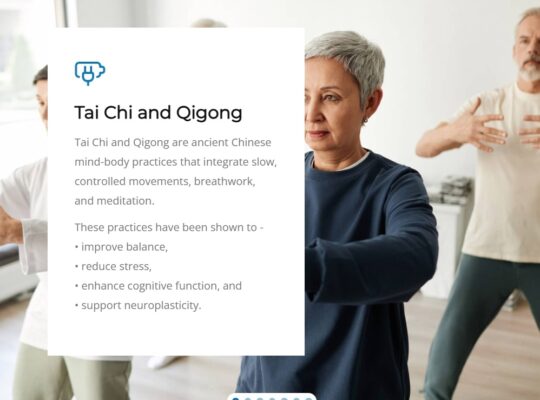Introduction
Multiple sclerosis (MS) is a chronic neurodegenerative disorder affecting nearly 1 million people in the United States. Common symptoms include muscle weakness, fatigue, pain, balance issues, cognitive difficulties, anxiety, and depression. While conventional treatments help manage symptoms, there is growing interest in mind-body practices like Qigong as complementary therapies for symptom relief.
Recent research has explored Qigong’s effectiveness for MS patients, highlighting improvements in physical function, emotional well-being, and overall quality of life. This article provides practical guidance on how MS patients can benefit from Qigong, based on key findings from expert surveys and clinical studies.

Why is Qigong Beneficial for MS?
1. Improves Balance and Coordination
A survey of 47 Qigong experts, MS clinicians, and researchers identified balance and coordination as major concerns for MS patients. Qigong helps by:
- Strengthening proprioception (body awareness).
- Enhancing muscle control and core stability.
- Using slow, deliberate movements to reinforce neuromuscular connections.
“Practicing mindful standing postures and slow walking can improve neuromuscular response and reduce fall risk.” — Qigong Instructor & MS Clinician.
2. Reduces Fatigue and Enhances Energy
Qigong’s breathing exercises and gentle movements help combat MS-related fatigue by:
- Increasing oxygen flow to muscles and brain.
- Activating the parasympathetic nervous system to promote energy conservation.
- Encouraging daily movement without overexertion.
“Even just 10 minutes of Qigong per day helped participants feel more energized and less fatigued.” — MS Patient from Clinical Trial.
3. Supports Mental and Emotional Well-being
Participants in community-based Qigong classes reported significant improvements in:
- Stress and anxiety reduction through meditation and slow breathing.
- Mood stabilization due to relaxation techniques.
- Increased focus and cognitive clarity.
“Qigong helped me feel calmer, more centered, and improved my ability to concentrate.” — MS Study Participant.
4. Reduces Pain and Muscle Spasticity
MS often leads to chronic pain and muscle stiffness. Qigong alleviates these symptoms by:
- Relaxing muscle tension through controlled movement.
- Stimulating circulation to affected areas.
- Engaging in mindful stretching, which improves flexibility.
“Gentle Qigong stretching exercises increased my range of motion and reduced stiffness.” — MS Study Participant.
5. Enhances Immune Function
MS is an autoimmune disorder, and inflammation plays a key role in symptom progression. Studies indicate that Qigong may:
- Reduce levels of inflammatory cytokines (such as IL-6).
- Strengthen immune system balance.
- Support the body’s natural healing processes.
“Qigong has been shown to reduce systemic inflammation, potentially benefiting MS patients.” — MS & Qigong Researcher.
Practical Guide to Qigong for MS Patients
1. Getting Started
- Choose a comfortable setting – A quiet space free from distractions.
- Wear loose, comfortable clothing – Allows for free movement.
- Start with short sessions – 10-15 minutes, gradually increasing to 30-45 minutes.
- Practice consistency – At least 3-5 times per week.
2. Recommended Qigong Exercises for MS
1. Standing Meditation (Zhan Zhuang)
- Stand with feet shoulder-width apart, knees slightly bent.
- Keep your hands at your waist or chest level, palms facing outward.
- Breathe deeply and hold the position for 1-5 minutes.
- Improves balance and postural stability.
- Increases mind-body awareness.
2. Tai Chi Walking
- Take slow, heel-to-toe steps, keeping your body relaxed.
- Synchronize each step with deep breathing.
- Practice for 5-10 minutes daily.
- Enhances coordination and stability.
- Strengthens leg muscles.
3. Cloud Hands (Yun Shou)
- Move your arms in slow, circular motions while shifting weight side to side.
- Keep your shoulders relaxed and breathe deeply.
- Promotes circulation and flexibility.
- Reduces upper body tension.
4. Seated Qigong for Fatigue
- Sit upright in a chair.
- Inhale deeply, raising your arms above your head.
- Exhale slowly, bringing your hands down in a circular motion.
- Ideal for those with mobility challenges.
- Helps restore energy without exertion.
3. Breathwork & Meditation
Abdominal Breathing (Diaphragmatic Breathing)
- Inhale through your nose, expanding your belly.
- Exhale slowly through your mouth.
- Repeat for 5-10 minutes.
- Calms the nervous system.
- Enhances oxygen flow to muscles and brain.
Creating a Sustainable Practice
- Start slow – Focus on basic movements before advancing.
- Listen to your body – Modify movements if needed.
- Combine with other therapies – Use Qigong alongside conventional MS treatments.
- Join a class – Community support improves motivation.
- Track progress – Keep a journal of symptoms and improvements.
Conclusion
Qigong offers a safe, accessible, and effective way for MS patients to manage symptoms and improve overall well-being. By incorporating gentle movements, mindful breathing, and meditation, individuals can experience better balance, reduced fatigue, stress relief, and improved immune function. Whether practiced alone or in a group setting, Qigong provides a powerful tool for enhancing quality of life with MS.
Would you like to start practicing today? Try these simple exercises and experience the benefits for yourself!






